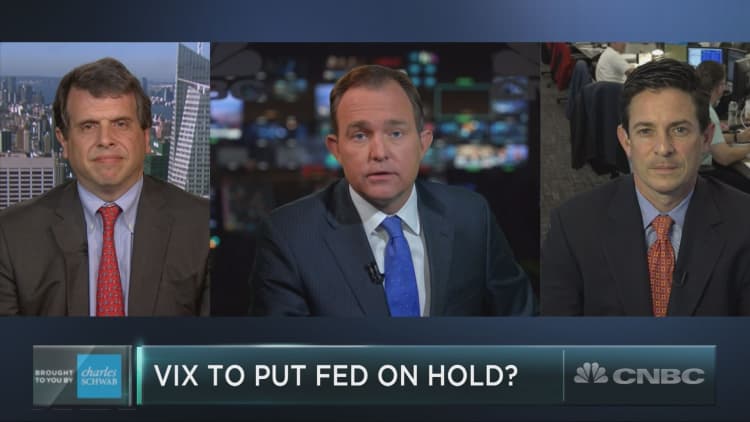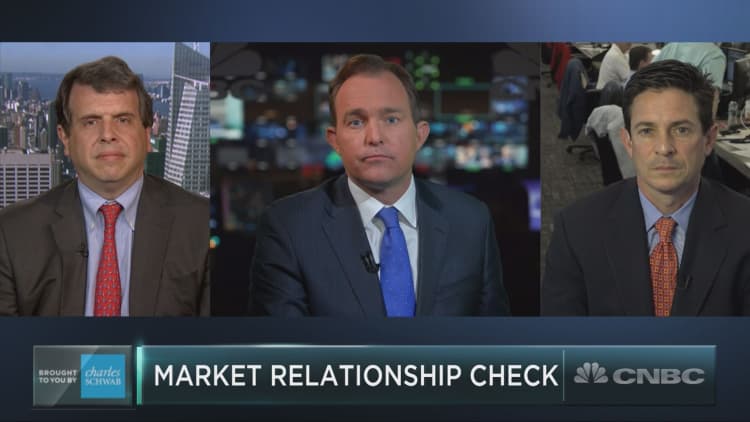


The charts suggest that the market's potential downside is limited, according to technical trader Todd Gordon of TradingAnalysis.com, and that has him turning the options market.
Last week, Gordon told CNBC's "Trading Nation" that a daily chart of the S&P 500 ETF (SPY) showed a gradual uptrend, tapering off into what he called a "three-way correction" move recently.
Using the correction's two recent downtrends as references, Gordon established that the SPY's support is around the $201 region, though he mentioned that anywhere from $200 to $205 could be used as support levels as well.
With the ETF closing Friday trading at $205.49, Gordon's data suggests that stocks have little room left on the downside.
On the other hand, he doesn't see a substantial rise as particularly likely. That sets up nicely for Gordon to sell a put spread – a trade also known as a "bull put spread."
According to the analyst, "I'm not convinced that the market is going to break out right now. If I were, we could do a call debit spread, which is taking an outright directional play in the market," he pointed out.
"Selling a put spread allows you to make money if the market goes up, sideways or even slightly lower with a combination of decreased volatility," he added.
Read MoreThis will be a good year for markets, but this could end it all: Analyst
Gordon's trade involves selling the June 205-strike puts for $3.39 per share, and buying the June 200-strike puts for $1.77. He receives $1.62 credit per share of the SPY—which comes to a total of $162 per options combination, given that each options contract controls 100 shares of stock.
With this trade, Gordon thus stands to make $162 with a maximum risk of $338. The risk may be more than the possible maximum reward, but the trade theoretically has a high probability of making money.
Gordon is convinced his choice of a put spread will actually help him weather any changes to the SPY and largely avoid the risk.
"A put spread gives us that flexibility or that cushion to not have to absolutely be right in the direction of the market," he explained. "So there is a skewed risk-reward, but the probability of success is higher."
Want to be a part of the Trading Nation? If you'd like to call into our live Wednesday show, email your name, number, and a question to TradingNation@cnbc.com






